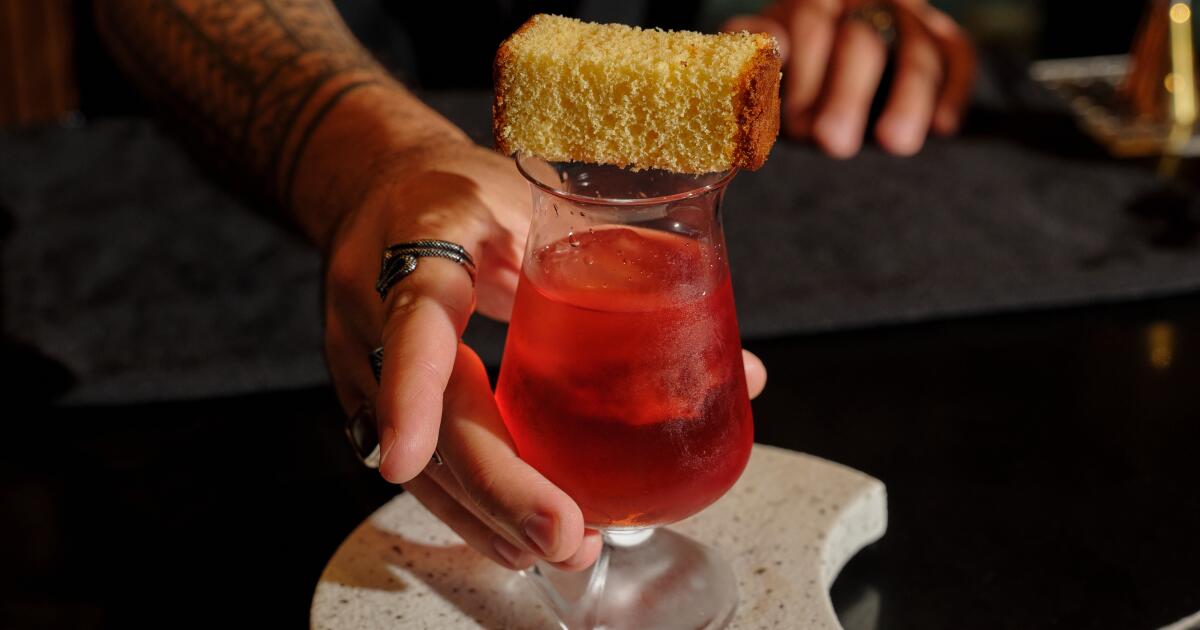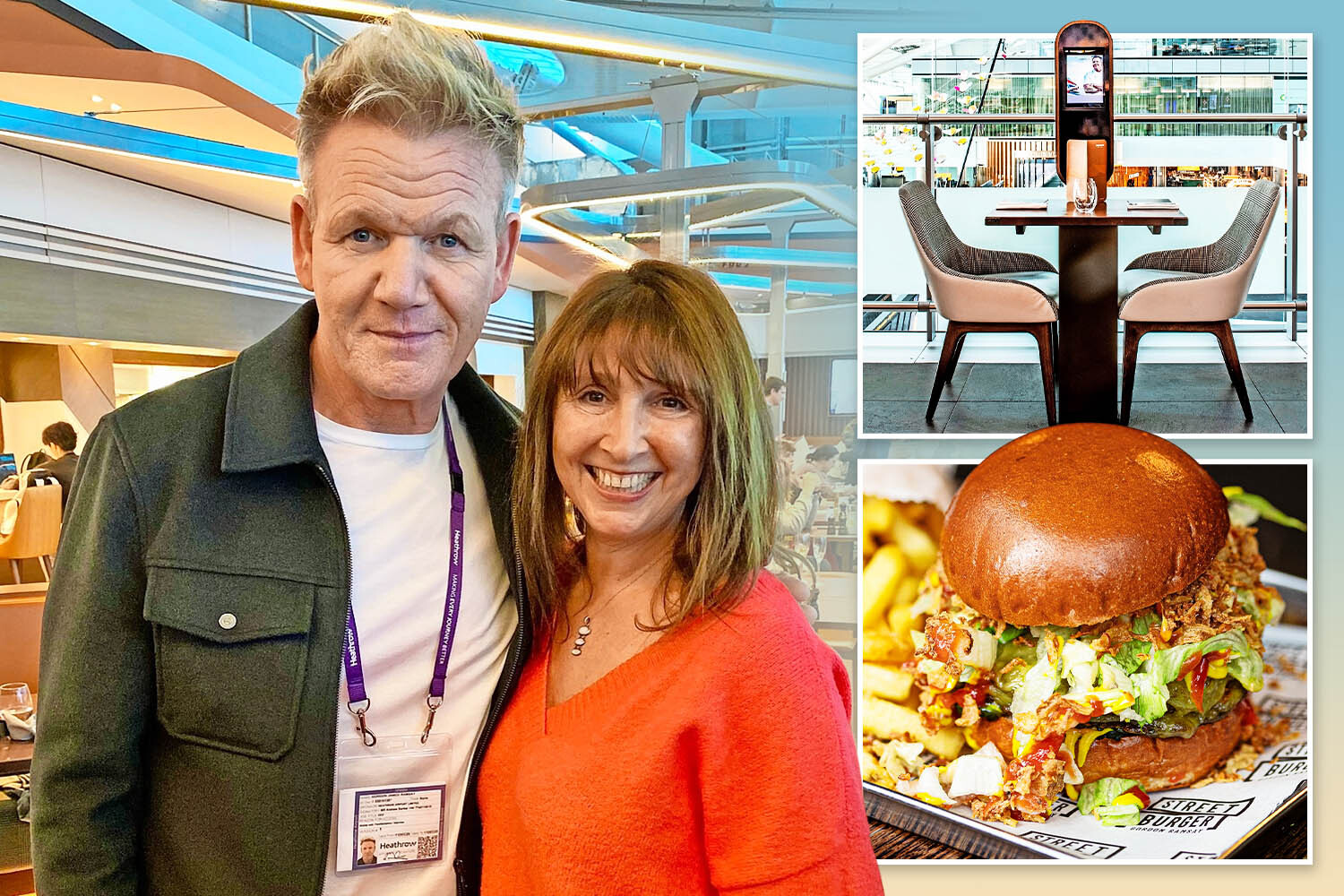Visalia, California’s ‘gateway to the Sequoias,’ offers unexpected charms
Even though Visalia holds the title of being the oldest city in the San Joaquin Valley, it’s more likely a place you’ve passed through on your way to visit General Sherman or the infamous carved Tunnel Log. Many Angelenos don’t even know how to properly pronounce its name.
But Visalia (say it: vai-SAY-lee-uh) — a place long known as “the gateway to the Sequoias” for its proximity to Sequoia and Kings Canyon national parks — is becoming a destination in its own right.
The 151-year-old Central Valley city has been working hard to shed its bucolic stereotypes and reinvent itself as a cosmopolitan oasis with hip boutiques, craft breweries and a revamped downtown. Changes started happening about five years ago when the Darling Hotel opened in the bones of the former 1930s Tulare County Courthouse annex. The Art Deco boutique hotel offers chic accommodations, catering to design-savvy travelers. Nowadays, downtown’s East Main Street, which plays host to tchotke-laden antique stores and patio dining, is a vibrant, walkable hub. At First Friday Downtown Art Walks, people can groove to a steady playlist of popular tunes thanks to a speaker system the city installed along the sidewalks. And although its Chinatown has been dismantled for years, many Chinese restaurants and a sizable Asian population remain, along with some of the community’s original Asian-inspired architecture along Main Street.
With farmlands nearby, farmers markets are held not once, but twice a week in Visalia’s downtown area, while local farms offer pick-your-own visits and plenty of restaurants make use of the local and seasonal produce at their disposal (seek out the honey glazed shrimp made with locally grown walnuts at Canton Restaurant as well as the berry pies and fruit preserves at the Vintage Press Restaurante).
Counterculture types will find respite at music and vintage store Velouria Records, cult film fans can catch free and low-cost screenings at the historic Visalia Fox Theater and paranormal-enthusiasts can chase spirits on ghost tours or late-night jaunts to the notoriously haunted Visalia Public Cemetery. There is even an extensive underground tunnel system — once used to operate gambling joints and opium dens — that still exists below downtown. Some people still find their way into them — those who aren’t deterred by massive spiders or trespassing charges, that is.
The city comes together for annual events, such as the twice-yearly downtown Wine Walk, the culinary extravaganza Taste of Visalia or the wintertime tradition Candy Cane Lane Parade, which celebrates its 79th anniversary this month. Also notable: Visalia became the first city in the United States to be designated a Certified Autism Destination in 2022, training at least 80% of its guest and public-facing staff in autism and sensory disorders.
About This Guide
Our journalists independently visited every spot recommended in this guide. We do not accept free meals or experiences. What should we check out next? Send ideas to guides@latimes.com.
As the city continues shucking its former reputation as a drive-by dot on the map, SoCal residents seeking a weekend escape only a few hours away would do well to take note. There is plenty of natural beauty to be found in the area, and one doesn’t have to drive into the higher elevations of the Southern Sierra Nevada Mountains to get some adventure time in. Rent a boat or a kayak at nearby Lake Kaweah, strap on a helmet and do some whitewater rafting in Three Rivers or wander through preserved wetlands that have been untouched for centuries.
It might not be the first place on your California vacation bucket list, but Visalia is worthy of a visit — and with its rapidly changing cityscape, will likely have more to offer with each passing year.
I tried Gordon Ramsay’s revamped airport restaurant with McDonald’s-like self-service screens

I PICK up what looks like a mini drumstick but is, in fact, a chicken lollipop.
Not any old lolly, mind, but one of celebrity chef Gordon Ramsay’s Hotter Than Hell specialities.
Sign up for the Travel newsletter
Thank you!
It smells scrumptious, but how hot is hot?
One brave bite later and the answer is clear: Proper fiery blast up the nostrils.
Delicious, though. More, please.
I’m at Heathrow Airport’s Terminal 5 for the launch of Gordon’s revamped, renamed restaurant, Plane Food Market.
He’s had a restaurant here since 2008 but it is now transformed.
You can still sit down and linger here as normal for a pre-flight meal.
But Ramsay has recognised that most of the 30million passengers who pass through T5 annually are more time-poor than ever, so he’s come up with a “grab and go” concept.
Diners can order at self-service screens in the restaurant’s entrance — as you might do in McDonald’s — then eat in the restaurant or take away.
He says: “The idea is that it will be ten minutes from ordering to table.”
The tables, incidentally, all have runway views.
But more importantly, what’s on the menu?
For the first time, you can find the best of Gordon’s crowd-pleasers all under one roof.
One counter serves his Asian favourites such as nigiri and spicy tuna roll — dishes you’ll find in his Lucky Cat restaurants.
Another has a range of burgers from his Street Burger bistros.
Not KFC, but GFC: Gordon’s Fried Chicken
There are also pizzas, fish and chips, all-day breakfasts, butter chicken curry, poke bowls, steaks, salads — you name it.
Gordon’s aim is to make eating here fun.
Quality ingredients
Indeed, he tells me his kids were having such a good time here ten days ago that they refused to board their plane.
We chat briefly about how we both have twins and how his eldest decided not to follow in Dad’s footsteps, but to instead join the police force.
And then he encourages me to taste some of his specials, all prepared in bite-size samples.
First up is another chicken dish.
Not KFC, but GFC: Gordon’s Fried Chicken.
Flights can be difficult, sometimes nerve-wracking. Getting a chance to eat before we board means we can get on that plane and relax
Gordon
It’s topped with a dollop of his curry and mango sauce and is superb — moist on the inside and with just the right amount of outer crispy crunch.
Next is his vegan ’Nduja Street Pizza, piled with gooey courgette ribbons, pesto and red onions.
As for the OGR Burger, it has so much flavour that it’s no surprise to learn it’s made from grass-fed Hereford beef.
But my favourite is the bao bun, oozing with shredded duck and hoisin sauce.
Gordon, who now has 31 restaurants in the UK and a further 61 globally, including in South Korea, Malaysia, France and Dubai, believes decent grub can ease the stress of flying.
He says: “Flights can be difficult, sometimes nerve-wracking. Getting a chance to eat before we board means we can get on that plane and relax.”
If a holiday really does begin the moment you’re airside, then starting a trip with a meal at Plane Food Market will set you off on the right foot.
Dishes are packed with quality ingredients and prices are around £18 for a pizza, burger or fish and chips. It’s cheaper if you grab and go.
I was not flying anywhere when I visited, but did take away a £9 portion of padron peppers for dinner at home.
Hours later, when I tucked in, they were still delicious.
Would I enjoy them before hopping on a flight? Absolutely. All I need to do now is book a holiday.
I stayed at the sprawling country resort with a £10million spa and award-winning restaurant

A HOME away from home, the hotel has both exquisite dining experiences and an abundance of amenities provided.
Here’s everything you need to know – from room rates to dining options at the hotel’s restaurant.
Sign up for the Travel newsletter
Thank you!
Where is the Carden Park Hotel & Spa?
In the heart of Chesire’s countryside, the hotel is best to get to by car.
However, Chester Station is just 14 miles away, or Crewe Station is about 30 minutes by taxi.
Flying in? Liverpool John Lennon Airport is around one hour away.
What is the hotel like?
The hotel is a sprawling resort in the middle of the Cheshire countryside.
Read more on hotel reviews
But despite its size, once you’re inside it feels very homely.
It has lots of open fires, attentive staff and quiet corners to sit and relax in.
What are the rooms like?
The rooms are lovely and big, with huge beds and pillows.
Our room had a power shower that was so good I spent some time trying to find out the make and model of it for my own bathroom.
Most read in Best of British
The 197-room hotel is going through a refurb – we had a new room and the finish was excellent.
Double rooms cost from £169 per night. Click here.
What is there to eat or drink there?
Definitely eat here. The hotel’s Vines restaurant is wonderful.
Prior to being seated at our table, we enjoyed a pre-dinner cocktail and pint in Goldie’s Lounge, which was a lovely way to start an evening.
Attentive staff took our order of smoked salmon and a beef wellington for two, before we were shown to our table.
The 3AA Rosette restaurant is small, but very well managed.
We also sampled Elements, the spa restaurant, which serves up hearty sandwiches, salads, and salt and pepper chips.
What else is there to do at the hotel?
Carden Park isn’t just a hotel – it boasts two amazing golf courses and a wonderful £10million spa.
We took a dip in the warm pool before enjoying a series of saunas.
Then we turned ourselves into prunes while sitting in an outdoor Jacuzzi before enjoying a 45- minute massage.
We would go back. The spa is set in stunning scenery with outside hot tubs, sun loungers and a pool. The food was worth returning for, too.
Guest spa access costs from £79 without treatment.
Is the hotel family friendly?
Yes, Carden Park is suitable for family vacations, with family rooms, and plenty of amenities.
Is the hotel accessible?
Yes, there are six accessible rooms available.
Furthermore, dining spaces are tailored to be accessible.
Looking for a place to stay? For more hotel inspiration click here.







